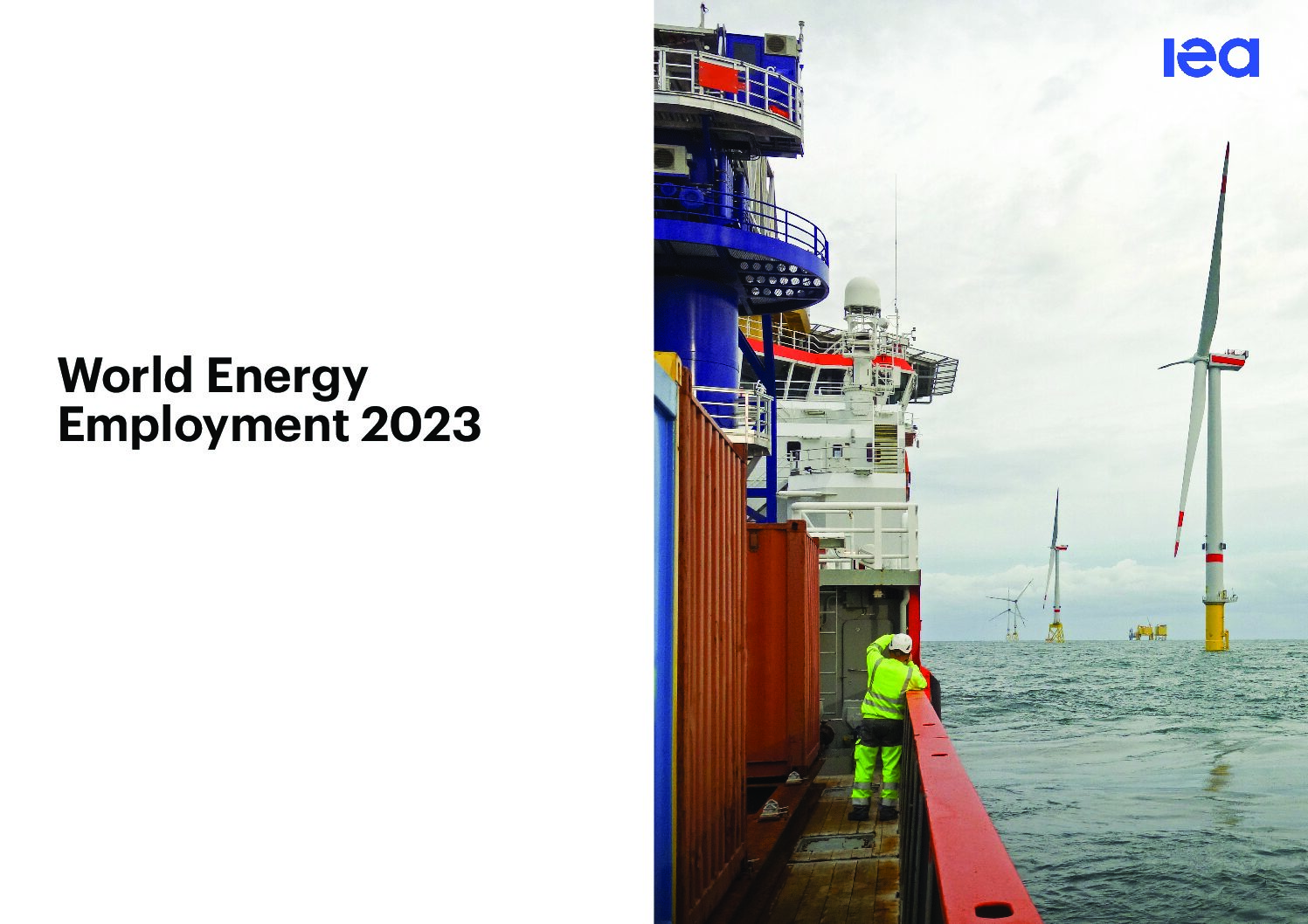IEA released WEE Report 2023
The second edition of the World Energy Employment WEE report tracks the evolutions of the energy workforce from before the pandemic, through the global energy crisis, to today.
- The WEE report provides a comprehensive stock-take of energy employment with estimates of the size and distribution of the labour force across regions, sectors, and technologies.
- This year’s WEE report also benchmarks energy employment needs against an outlook to 2030 across IEA scenarios, outlining key policies that could help countries cultivate and maintain a skilled energy workforce throughout the energy transition.
- WEE 2023 explores in depth the risks of skilled labour shortages and how this may influence the outlook for the industry and includes new analysis on skills, certifications, wages, and job postings.

Key findings of WEE report:
- The clean energy sector employs more workers than the fossil fuels sector.
- China witnessed the largest gain in clean energy jobs from 2019-22 followed by Europe and other Asia Pacific and India.
- Since 2019, most clean energy employment growth has been in the Solar Photovoltaic sector.
- In India, fossil fuel employment rose above 2019 levels.
Summary of WEE Report
- More people work in the energy sector today than in 2019, almost exclusively due to growth in clean energy, which now employs more workers than fossil fuels.
- The uptick of clean energy jobs occurred in every region of the world, with China’s energy workforce undergoing an unprecedented reorientation toward clean energy.
- Amid the many positive trends emerging for clean energy employment, skilled labour shortages are already plaguing the sector and require attention.
- A proprietary survey of over 160 energy companies conducted by the IEA indicates that installation and repair work positions were the number one occupation segment for which respondents had the greatest difficulty hiring.
- The number of workers pursuing degrees or certifications relevant to energy sector jobs are not keeping pace with growing demand.
- Many fossil fuel workers have the skills and specialisations needed to fill clean energy roles.
- This transition risk is particularly acute for coal miners in emerging and developing countries.
- Oil and gas workers face less immediate transitions risks, but the long-term decline of fossil fuels demand is already shaping labour trends in the industry.
- Higher wages in the energy sector have helped attract workers from other industries, but wage disparities between energy segments could impede the transfer of needed skills.
- In all scenarios, job growth outweighs declines to 2030, but avoiding skills shortages calls for more attention from policy makers, as does maximising the benefits of new jobs created.
